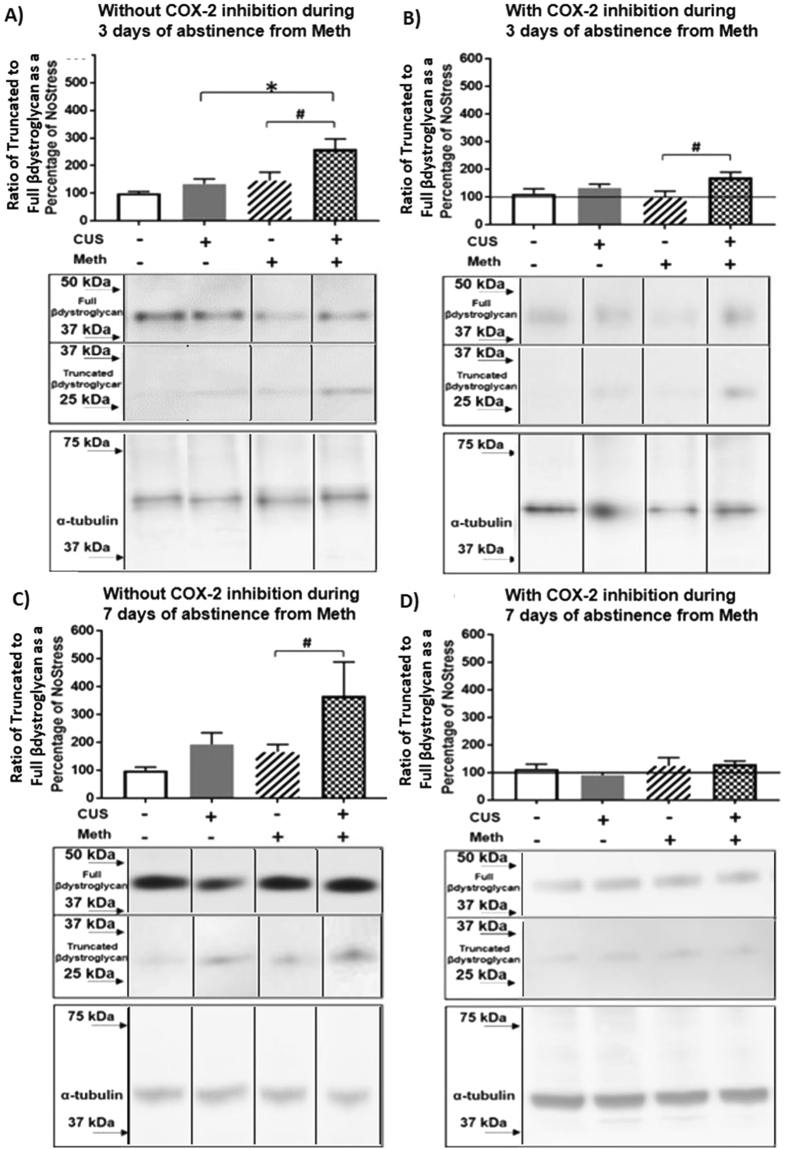Figure 4.
Truncation of β-dystroglycan in cortical microvasculature during abstinence from Meth. (A) 3 days of abstinence from Meth. CUS + Meth compared to CUS (*p < 0.01) and Meth (#p < 0.01) n = 7–8/group. Middle panel shows representative blot of full and truncated forms of β-dystroglycan after 3 days of abstinence from Meth and the bottom panel shows the loading control α-tubulin. (B) COX-2 inhibitor nimesulide treatment during 3 days of abstinence CUS + Meth vs. Meth (#p < 0.01) n = 6–8/group. Line indicates controls that did not receive nimesulide treatments. Middle panel shows representative blot of full and truncated forms of β-dystroglycan in nimesulide treated groups after 3 days of abstinence from Meth and the bottom panel shows the loading control α-tubulin. (C) 7 days of abstinence from Meth and β-dystroglycan in CUS + Meth vs Meth (#p < 0.01) n = 6/group. Middle panel shows representative blot of full and truncated forms of β-dystroglycan after 7 days of abstinence from Meth and the bottom panel shows the loading control α-tubulin. (D) COX-2 inhibitor nimesulide treatment during 7 days of abstinence. Line indicates controls that did not receive nimesulide treatments. Middle panel shows representative blot of full and truncated forms of β-dystroglycan after nimesulide during 7 days of abstinence from Meth and the bottom panel shows the loading control α-tubulin. β-dystroglycan and α-tubulin band images presented have been vertically sliced in order to juxtapose lanes that were non-adjacent in the blot. Full-length blots are presented in Supplementary Figures S4A, S4B, S4C and S4D.

